Discover 8 different Facial Masks That Renew Your Skin for Every Skin Need
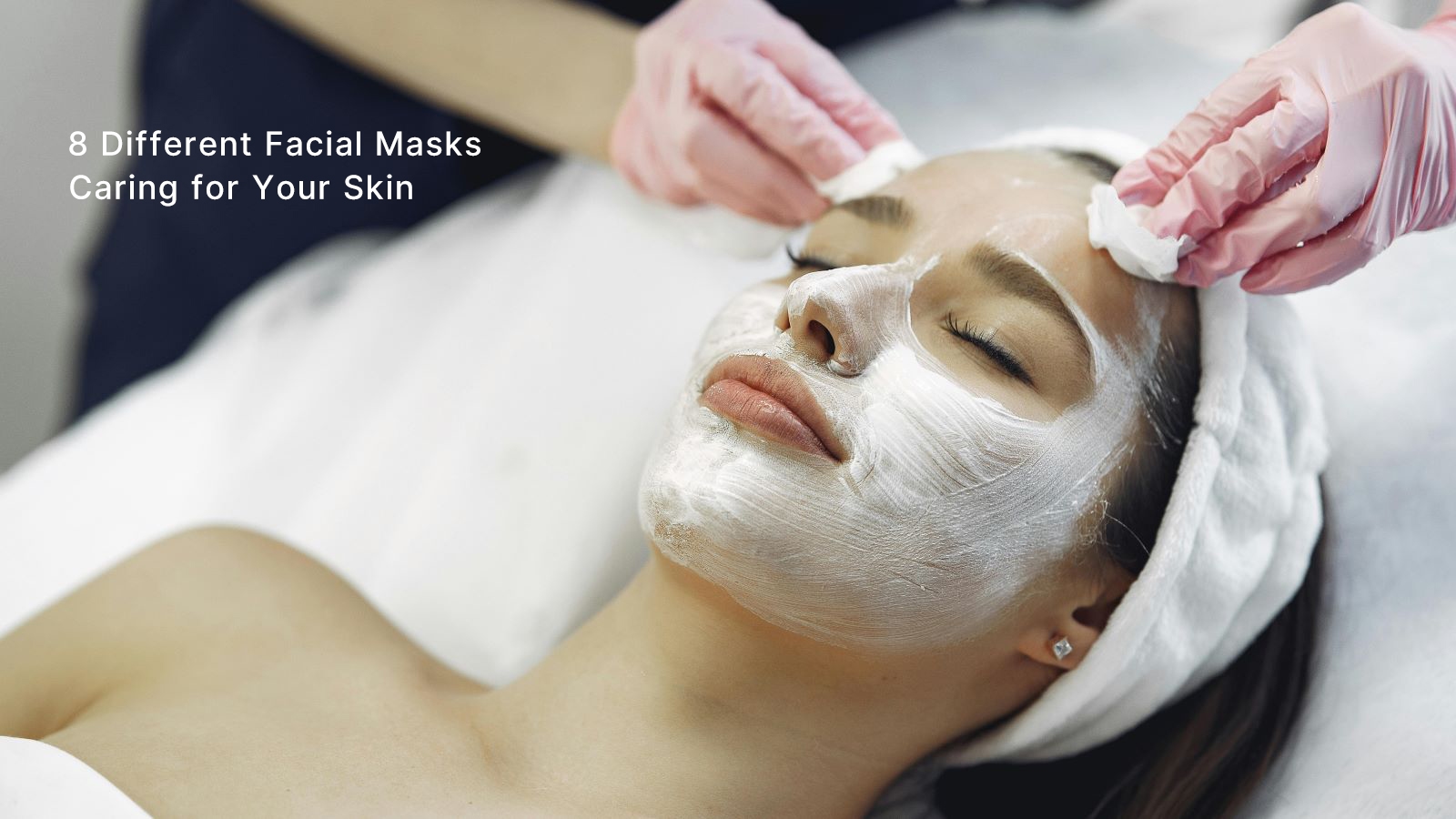
Sometimes, taking care of your skin is also a way of taking care of yourself. Whether it’s the calming scent of a cream mask or the soft glow after a good LED session, facial masks offer more than just visible results, they offer a moment of pause.
But with so many different types of masks available today, choosing the right one can feel overwhelming. Should you go for a clay mask to reset your oily skin? Or is a sleeping mask better for your dry winter face?
This guide walks you through 8 popular types of face masks: their materials, ideal use cases, and when they work best. It’s everything you need to match your mask to your mood and your skin.
✻ This page may contain affiliate links. If you purchase through these links, we may earn a commission at no extra cost to you. As an Amazon Associate, we earn from qualifying purchases. We only recommend products we believe will add value to our readers.
1. Sheet Masks
Sheet masks are arguably the most iconic and widely used form of facial masks today. In fact, when most people talk about “using a face mask,” they’re usually referring to sheet masks. These thin, face-shaped sheets are soaked in nutrient-packed serums that deliver instant hydration, radiance, and skin-soothing effects in just minutes.
They’re perfect for moments when your skin feels dry, tired, or just needs a quick refresh, whether you’re prepping for a big day or unwinding after a long flight.
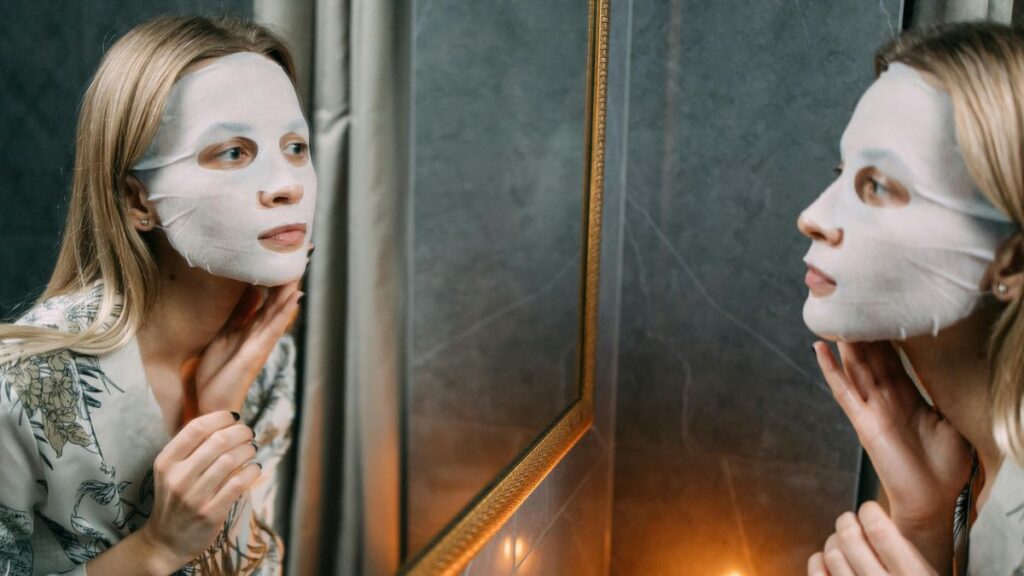
- Material: Usually made from cotton, hydrogel, or bio-cellulose, each designed to cling closely to the skin and help the serum absorb more effectively.
- Best For: All skin types. Ideal before events, after sun exposure or travel, or as a daily boost. Suitable for both daytime and nighttime use, and great year-round.
- Duration: Leave on for 15–20 minutes.
- Tips & Drawbacks:
- Be careful not to leave them on too long—once the sheet starts to dry out, it may begin drawing moisture back from your skin instead of delivering it.
- Sheet masks are single-use and can feel cold at first.
Product Picks:
- 👉 111SKIN Theorem Bio Cellulose Facial Mask – for All Skin Types, Excellent for deep hydration and calming dry skin
- 👉 Collagen Wrapping Facial Mask – for ElasticityV Hydrating Glow Glass Skin and instant plumping and moisture
2. Clay and Mud Masks
Clay and mud masks are beloved for their powerful purifying abilities. They work by drawing out impurities, absorbing excess oil, and tightening the skin, all of which help unclog pores, reduce breakouts, and smooth rough texture. After rinsing, your skin often feels detoxed, clearer, and more refined.
These masks are especially helpful when your skin feels congested, shiny, or prone to breakouts. They’re not meant for everyday use but make a great weekly treatment to reset your skin.
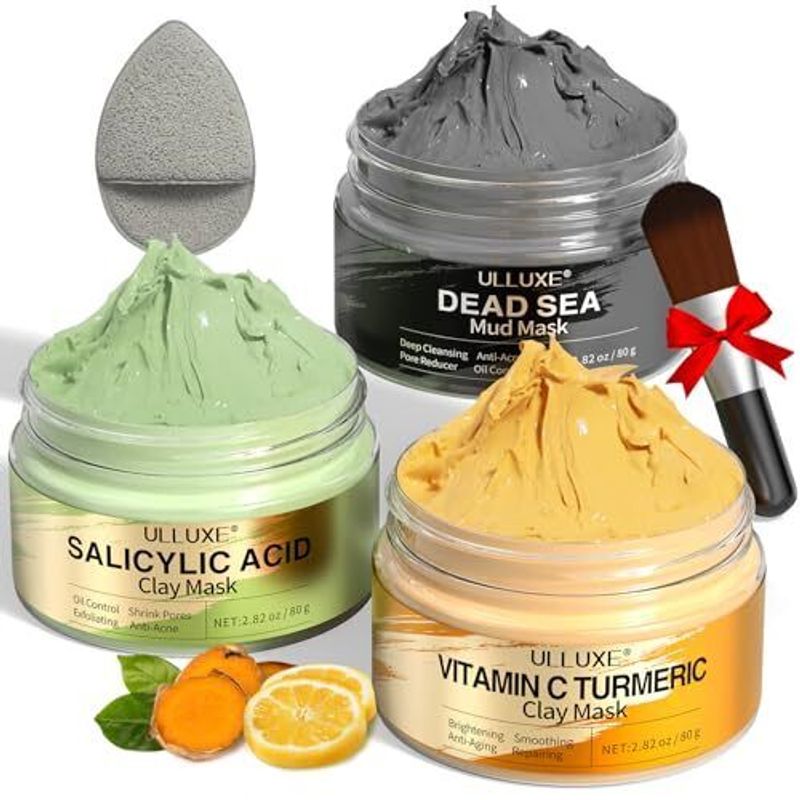
- Material: Common ingredients include kaolin (gentler), bentonite (stronger absorption), volcanic ash, and mineral-rich Dead Sea mud.
- Best For: Oily and acne-prone skin; especially useful in summer or humid climates; evening use 1–2 times a week
- Duration: Leave on for 10–15 minutes, but don’t wait until it fully cracks and over-dries—this can strip your skin and cause irritation.
- Tips & Drawbacks:
- Not ideal for dry or sensitive skin, unless formulated with soothing ingredients like aloe or chamomile.
- These masks can be messy to apply and rinse off, and they may feel tight as they dry.
Product Picks:
- 👉 innisfree Super Volcanic Pore and AHA Clay Mask
- 👉 Clay Mask set: Vitamin C Turmeric Clay Mask, Dead Sea Mud & Salicylic Ac
3. Cream Masks
Cream masks are thick, rich, and comforting that like a cozy blanket for your skin. They’re designed to deeply nourish, hydrate, and restore the skin’s natural barrier, making them ideal when your face feels tight, rough, or lacking that healthy glow. These masks don’t just moisturize; many are formulated with anti-aging ingredients to help improve elasticity and radiance over time.
They’re perfect for colder seasons or dry environments, and especially helpful during long flights or nighttime routines when skin needs extra support.
- Material: Cream-based formulas rich in oils, ceramides, peptides, hyaluronic acid, or shea butter
- Best For: Dry, mature, or dehydrated skin; ideal in winter, dry climates, or during flights; best used at night
- Duration: 15–20 minutes for rinse-off masks; some are designed to be left on overnight for maximum hydration.
- Tips & Drawbacks:
- Avoid layering them under other thick moisturizers unless it’s a leave-on formula. Always patch test rich formulas if you have reactive skin.
- Cream masks can feel heavy, and if overused, they may clog pores—especially for acne-prone skin.
4. Gel Masks
Gel masks are light, refreshing, and incredibly soothing, perfect for calming skin that’s irritated, overheated, or just in need of a hydration boost. Their water-based formulas absorb quickly without leaving a greasy residue, making them ideal for oily or sensitive skin. The cooling sensation also makes them a favorite in hot weather or after a day in the sun.
They’re often transparent and can double as sleep masks or pre-makeup prep when your skin feels parched but you want to avoid heaviness.
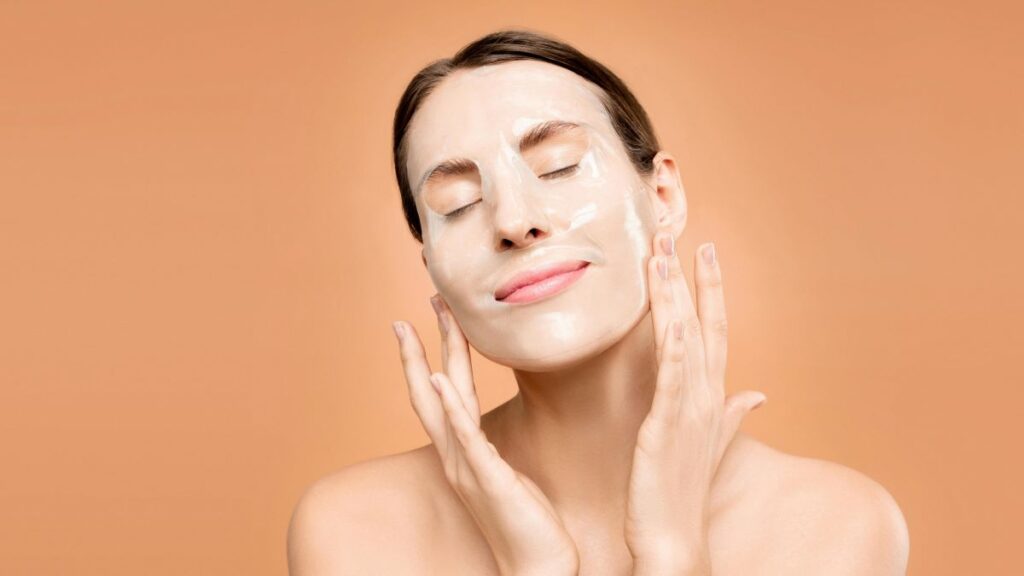
- Material: Water-based gels infused with ingredients like aloe vera, hyaluronic acid, cucumber extract, or green tea
- Best For: Sensitive, oily, or sun-exposed skin; great for summer, after sun exposure, or as a morning pick-me-up; suitable for both day and night use
- Duration: 10–15 minutes for rinse-off versions, or overnight for sleeping gels
- Tips & Drawbacks:
- refrigerating before use can enhance the soothing effect
- Some formulas may feel sticky or slippery; not as intensive as cream masks for very dry skin;
5. Peel-Off (Exfoliating) Masks
Peel-off masks are a satisfying and effective way to exfoliate the skin and remove deep-seated impurities. These masks dry into a film that you peel off in one go, lifting away dead skin cells, blackheads, and excess oil in the process. They leave the skin feeling smoother, brighter, and more refreshed—making them ideal when your face feels rough or congested.
Peel-off masks are a special type of gel mask, but unlike regular gel masks that focus on hydration and soothing, peel-off masks use a more adhesive, film-forming base that delivers physical exfoliation. They belong to the broader family of exfoliating masks but stand out for their unique peeling action, which offers instant visual results.
- Material: Gel-based formulas with strong film-forming polymers, enriched with exfoliating agents like charcoal, clay, salicylic acid, or fruit enzymes. Compared to typical gel masks, their texture is thicker and more adhesive.
- Best For: Normal to oily or combination skin; dull texture, clogged pores, and blackheads; best for evening use, 1–2 times per week.
- Duration: 20–30 minutes or until fully dry. Peel off gently from the edges once the film sets completely.
- Tips & Drawbacks:
- Not suitable for dry or highly sensitive skin. Avoid use after chemical exfoliants or retinol. Do not apply too close to eyes or eyebrows.
- Can be uncomfortable to remove—especially on sensitive areas or facial hair.
6. LED Light Therapy Masks
LED light therapy masks are the futuristic face masks of skincare. These high-tech wearables use different wavelengths of light, like red, blue, and near-infrared to stimulate skin repair, reduce inflammation, fight acne-causing bacteria, and even boost collagen production. Each color light targets a different concern:
- Red light helps with anti-aging by promoting collagen production.
- Blue light combats acne by killing bacteria.
- Near-infrared supports healing and reduces inflammation.
Unlike traditional masks, they don’t involve any creams or gels, making them clean and hassle-free once in use.
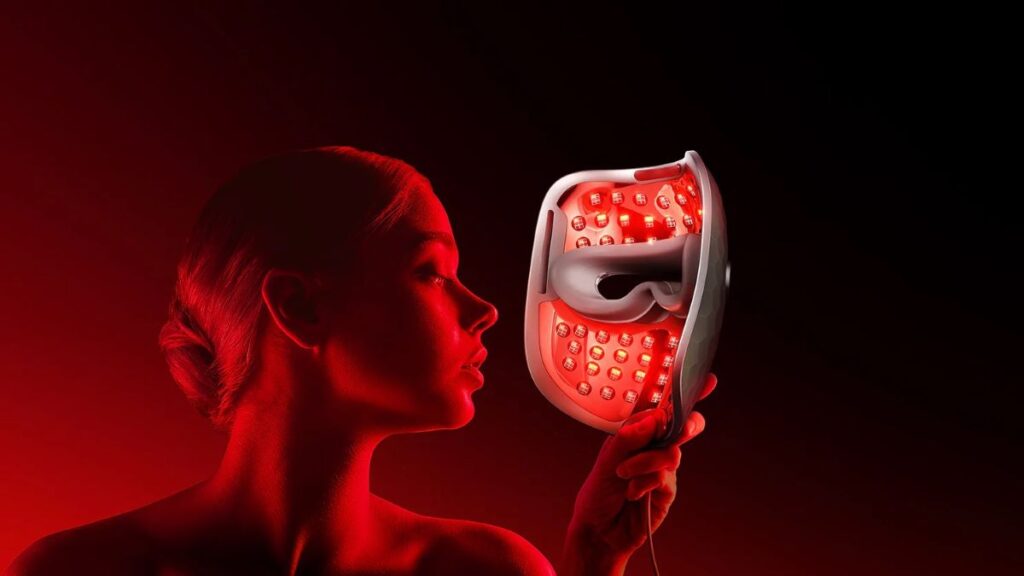
- Material: Flexible medical-grade silicone or molded plastic, embedded with LED light diodes
- Best For: All skin types; especially great for acne-prone, aging, or inflamed skin; best used in the evening or during rest time
- Duration: 10–20 minutes per session, 3–5 times per week (as recommended)
- Tips & Drawbacks:
- always wear protective goggles or ensure eyes are shielded, not recommended for individuals with heart conditions, epilepsy, serious illness, intoxication, or during pregnancy
- Requires consistent long-term use for visible results; can feel bulky or awkward at first; higher upfront cost compared to traditional masks;
7. Bubble Masks
Bubble masks are a fun and foamy twist on facial treatments. Once applied, these masks react with oxygen in the air to create tiny bubbles that fizz and foam on the skin. This bubbling action helps gently cleanse pores, remove dirt, and promote blood circulation—leaving your skin refreshed and glowing.
They often start as a gel or cream texture and bubble up within seconds, providing a unique, tingling experience. Many bubble masks also include ingredients like charcoal, clay, or green tea to enhance detox and clarify effects.
- Material: Oxygen-activated cream or gel formulas with ingredients like charcoal, green tea, or enzymes
- Best For: Dull or congested skin; suitable for normal to oily skin types; great for a refreshing evening skincare treat; more common in warm seasons
- Duration: 5–10 minutes (until bubbles fully form and settle)
- Tips & Drawbacks:
- avoid overuse as it can dry out the skin; clean thoroughly after use to prevent residue buildup
- May feel ticklish or itchy; not suitable for very sensitive skin
8. Sleeping Masks
Sleeping masks, also known as overnight masks, are a special type of facial mask designed to be worn for extended periods—usually overnight—while you sleep. Unlike traditional masks, they are lightweight and formulated to deeply hydrate and repair the skin without clogging pores, allowing your skin to absorb nutrients slowly and continuously during rest.
Because they stay on for hours, sleeping masks focus on intense moisture replenishment and skin barrier repair. They’re perfect for dry, dehydrated, or stressed skin and are especially useful in colder seasons or during air-conditioned environments that can sap skin moisture.
- Material: Lightweight gels, creams, or emulsions rich in hyaluronic acid, ceramides, antioxidants, and nourishing oils
- Best For: Dry, sensitive, or mature skin; ideal for use at night and throughout autumn and winter; excellent for skin needing repair or extra hydration
- Duration: Overnight (6–8 hours)
- Tips & Drawbacks:
- Generally gentle and low-maintenance; avoid layering with heavy night creams to prevent clogging; ensure pillowcases are clean to avoid transfer;
- may not be suitable for very oily or acne-prone skin if used too frequently
Product Picks:
Acid Turmeric Brightening Gold Jelly Overnight Face Mask for Glass Glow Skin
Conclusion: Caring for Your Skin with Intention
Skincare is personal, and there’s no “perfect” mask that suits everyone, every day. The beauty lies in finding what works for you—whether that’s a soothing gel mask after sun exposure, or a deep-cleansing clay once a week.
By understanding the materials, timing, and benefits of each mask type, you not only treat your skin with more intention, but also turn your routine into a small act of care.
After all, radiant skin isn’t just about the products—it’s also about the way you care for yourself. So take your time, choose thoughtfully, and let every mask moment feel like a quiet gift to your skin.


